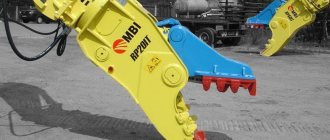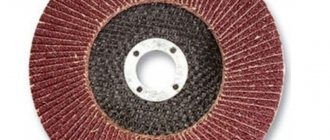Shovel as a household tool
The industrial market for working tools offers a choice of classic shovels (hand-held devices) and electric models, which in their functional properties are similar to small cultivators, belonging to a separate type of equipment and intended mainly for cultivating a fairly large area.
There are models no longer than 20 cm and easily fit in the palm of your hand. But these are not children's shovels, but a tool designed for working in greenhouses and planting plants in flower pots.
For construction work and garden digging, larger models are used, some of which have a telescopic handle to adjust the height of the handle in accordance with human height.
This design feature is also convenient because such equipment does not take up much space, it is easy to store, transport in the trunk of a car and other methods of transportation.
Size
The cutting must be the right size. This is one of the most important rules. It is believed that the ideal cutting size should imply the correct height:
First of all, you need to pay attention to the worker’s shoulder. Approximately for our person, the height of the handle should vary between 140-180 cm
If the growth is higher or lower, then you need to change the length of the cutting accordingly; If the cutting is being prepared for use with a shovel, then you can make it shorter. The fact is that it is extremely inconvenient to rake various loose objects or other things with a long shovel, but a short one, on the contrary, is easier. This also applies to pitchforks. If you are going to use them to carry hay bales, then it would be better to put them on a short handle, but you need to load the bales onto the carriage with long forks; If the shovel is a sapper, then naturally the handle length should be reduced to extreme values. As a rule, it is 70-80 cm, perhaps even less.
Components of a shovel
The tool is quite simple, the design elements of which are:
- Cutting. The longest part of the product, some models have a telescopic handle, which increases the convenience of working with the device by adjusting the height. It is made of wood, metal, some instruments may have a plastic handle. The most popular metal is aluminum; such shovels are not heavy and effectively resist corrosion. During heavy and intensive work, any cutting can break, in which case it is easy to replace.
- Capture. A part located at the top of the handle. This handle is shaped like the letter D and allows you to use the shovel comfortably. To improve grip and avoid splinters, this part can be rubberized.
- Collar. The junction of the handle with the blade or bucket - the parts of the shovel are secured with a screw or rivets.
- Bucket (blade). Made from wood or metal (steel, aluminum). Wooden ones are mainly used for cleaning the area near the house; the material wears out, so such products have a short service life. Aluminum is a soft alloy that also wears out quickly, so devices made from it are inexpensive. Its advantage is its light weight. The most expensive and wear-resistant products are made from high-quality hardened steel.
- Step (bayonet). The supporting element of bayonet shovels, which is pressed with the foot during operation. Allows you to adjust the digging depth and leave the shovel in the ground in a vertical position.
Blade material
The main criterion for choosing a particular shovel is the material from which the plate is made.
In a bayonet shovel these are different types of metals:
- Titanium. Household tools made of titanium alloy are the most popular and in demand on the agricultural tools market. The product is light in weight and has a durable plate. There is less soil sticking to the canvas and it does not bend. The working tool is effective, but expensive. In addition, the inflexible properties of the metal can lead to breakage of the product under intense physical impact.
- Steel. Perhaps the most popular and popular option for everyday work at a summer cottage. There are no complex technical features, it performs various tasks, and the price is reasonable. Among the disadvantages are the weight of the product (quite heavy) and the possibility of breakage due to high adhesion to the ground.
- Spring high-alloy steel. This model has many advantages, so its popularity is growing every year. The density of the canvas is increased, optimal flexibility, the metal wears less and is several times stronger than iron. Rail steel is slightly heavier than titanium alloy, but in many characteristics, including density, it is not inferior to this metal. The disadvantage is the difficulty of sharpening, which is compensated by the fact that the metal is less susceptible to abrasion and the shovel can be used for a long period of time. The cost of the product is much cheaper than a titanium shovel and slightly more expensive than an iron one.
- Stainless steel. Also refers to common and popular materials. In terms of performance characteristics it is inferior to rail steel and titanium alloy, but in terms of physical and mechanical properties it is superior to simple iron in terms of strength and resistance to fractures, and the price is not much higher. Summer residents also value stainless steel products because it effectively resists the effects of negative environmental factors and is characterized by sufficient durability.
If a shovel is needed for intensive long-term use (for example, for construction work), then titanium alloy products are a more suitable option.
For domestic needs in the garden, ordinary steel and stainless steel are more suitable options.
Classification and types of shovels for the garden
Working entrenching tools are presented in various models and forms, depending on the intended use.
By shape
- Sovkovaya. Mainly used for loading and moving so-called “loose” cargo (sand, crushed stone). A distinctive feature is that the edges of the bucket have sides that are curved upward so that the load does not fall off.
- Bayonet. A common model with a flat blade with a pointed end. Effective when digging up gardens and other excavation work.
- Semicircular. Flat blade with a rounded end (crescent shape). A specialized tool allows you to work effectively in hard-to-reach places, it can be used in corners, and is used for edging curbs.
Design
- Collapsible. Convenient for storage and transportation.
- Non-separable. The classic is the most common version of the device.
According to the material of manufacture
- Wooden shovels;
- Metal tool;
- Products made of polycarbonate (black or transparent).
By purpose of use
- Trench. The blade is in the form of an elongated blade, tapering at the end. This tool is convenient for hollowing out soil; the narrow shape does not allow the full use of the strength of the legs; the person working with the tool must exert force on the arms and torso. Used in the garden and landscape design.
- Kant-shovel. Inventory for narrow applications. Mainly used for edging borders, it can be used to cut off small roots of trees and other plants.
- For snow removal. A shovel with a wide bucket: a flat blade or a tray with sides. A model with a large tray is called a scraper and has a special handle (holder).
- Sadovaya. A universal design that allows you to perform various tasks. The handle on the top may have a handle located across it. The tray is rectangular in shape, slightly bent forward.
Manufacturers offer various models for gardening and earthworks, construction, as well as those designed for hunting, fishing and other specialized ones, for example, engineer or small infantry.
Choosing a shovel for the garden
Regardless of the model, size, shape and other parameters of the tool, first of all you should take into account what tasks (works) the equipment is purchased for. A metal product is more durable and therefore durable. Plastic and wooden devices are inferior to them in many respects.
For heavy and intensive work, it is necessary to pay attention to the size of the handle - the longer it is, the lower the load on the back and, accordingly, it is much more comfortable to work with such a product.
Most cuttings are made from wood. This option is low in price, but is inferior in weight to others, as it is heavier. Commercially attractive are tools made of aluminum, which are quite light in weight and have a long service life.
Fiberglass cuttings are considered more expensive - they are lighter in weight than wood, but more expensive.
- Regarding the material of the bucket (blade), steel devices (forged, stamped) are preferable.
- The most durable is a shovel made of hardened steel, but the cost in this case will be quite high.
- A good option is stainless steel, the blade of which does not corrode.
- Plastic is mainly used for removing snow and small debris.
If you pay attention to the handle, the most common shapes are in the form of the letters D and T. If there are no special preferences, then try both options before purchasing. Some people are more comfortable with the D shape, while others find the T grip more comfortable.
When choosing a tool, you should take into account the height of the person who will work with the tool - the ratio should be optimal. Long products are not suitable for short people, and small shovels are more suitable for older people.
One of the main aspects of the choice is the purpose of the tool, for what work it will be used. A large bucket size is preferable for large quantities of material (sand, crushed stone, earth, etc.).
If you plan to work on a decorative surface (paving slabs), preference is given to plastic or aluminum products to avoid damage to the coating.
Cutting
It is worth paying attention to which cuttings are preferable in the work. There are several options for selecting handles:
- Wood. This is the most common and familiar version of the cutting. A wooden handle is durable and will last a long time, but only if it is made of durable wood. When choosing a wooden handle, give preference to smooth models, without knots, the fibers should be located along the handle . Before work, the shovel handle can be treated with sandpaper and varnished. This way it will last longer. It is better to store a shovel with a wooden handle in a dry place, otherwise it will begin to rot;
- Aluminum. Aluminum cuttings are also popular due to their lightness. But they are not always strong, they are easy to bend, and as a result it is better to give preference to composite materials. The lightness of such an aluminum handle is achieved due to the fact that it is empty inside. Therefore, a shovel with such a handle should not be left outside if you want it to last for a long time - water can accumulate inside, which, when frozen, will tear the aluminum.
Tips for using a shovel
Although a shovel is a fairly simple tool, working with this tool is not so easy. To save time, reduce stress on your arms and back, and prevent pain and injury, you should adhere to some operating principles:
- Place your feet at shoulder width or in another convenient way, but not at attention.
- The working leg should be located in close proximity to the blade.
- In order to press the equipment sufficiently and easily drive it into the ground, you should place your foot on the blade and transfer the center of gravity (body weight) to it.
- For bayonet shovels, it is necessary to periodically sharpen the blade (for example, with a grinder) so that the product fits freely into the ground without unnecessary effort.
- When working with the device, you should use your core muscles and legs more, and less use your back and arm strength.
- After working with a shovel, it should be thoroughly cleaned and, preferably, washed. Store in a dry place.
Regardless of the purpose for which a shovel is purchased - for gardening, construction, loading and unloading, snow removal, it must be appropriate for height, with a comfortable and ergonomic handle, and made of reliable material. Then the household equipment will last a long time and will help you perform many types of work.











